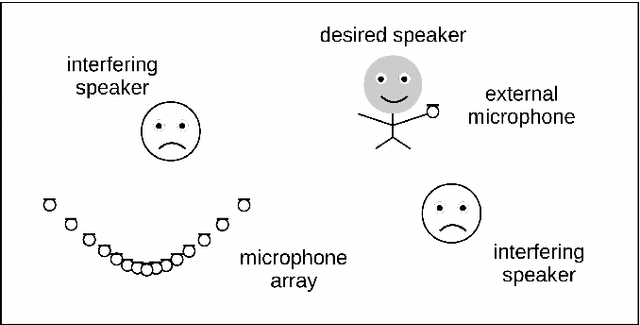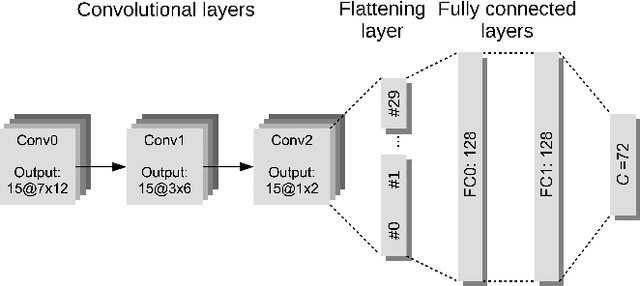Ulrik Kowalk
Geometry-aware DoA Estimation using a Deep Neural Network with mixed-data input features
Dec 09, 2022Abstract:Unlike model-based direction of arrival (DoA) estimation algorithms, supervised learning-based DoA estimation algorithms based on deep neural networks (DNNs) are usually trained for one specific microphone array geometry, resulting in poor performance when applied to a different array geometry. In this paper we illustrate the fundamental difference between supervised learning-based and model-based algorithms leading to this sensitivity. Aiming at designing a supervised learning-based DoA estimation algorithm that generalizes well to different array geometries, in this paper we propose a geometry-aware DoA estimation algorithm. The algorithm uses a fully connected DNN and takes mixed data as input features, namely the time lags maximizing the generalized cross-correlation with phase transform and the microphone coordinates, which are assumed to be known. Experimental results for a reverberant scenario demonstrate the flexibility of the proposed algorithm towards different array geometries and show that the proposed algorithm outperforms model-based algorithms such as steered response power with phase transform.
Signal-informed DNN-based DOA Estimation combining an External Microphone and GCC-PHAT Features
Jun 11, 2022



Abstract:Aiming at estimating the direction of arrival (DOA) of a desired speaker in a multi-talker environment using a microphone array, in this paper we propose a signal-informed method exploiting the availability of an external microphone attached to the desired speaker. The proposed method applies a binary mask to the GCC-PHAT input features of a convolutional neural network, where the binary mask is computed based on the power distribution of the external microphone signal. Experimental results for a reverberant scenario with up to four interfering speakers demonstrate that the signal-informed masking improves the localization accuracy, without requiring any knowledge about the interfering speakers.
 Add to Chrome
Add to Chrome Add to Firefox
Add to Firefox Add to Edge
Add to Edge